Beyond Pellets: Transforming Hops with Technology
The standard production process of hops had always been to pelletize whatever wasn’t used fresh. Pelletization consisted of machinery that dried, milled, then pelletized the hops into those tiny little pellets we all know today. These are typically referred to as T90 pellets.
Pelletized hops became a product that was easy to transport, had a very stable shelf life and were extremely easy to use by brewers. Life was good, but this process also had its issues.
During pelletization, the water content of fresh hop cones is reduced down to about 8-10%. Hop kilning loses up to 50% of the hop’s volatile components as well. Unfortunately, those volatile hop compounds are what give us the aromas and flavors we expect today, so manufacturers started looking for alternative methods.

Over the last couple of years, hops have started to be processed and packaged a little differently with new methods. Usually the aim of each of these is three-fold:
- To retain as much aroma as possible
- To prevent wort loss
- To increase shelf life
We’ve identified the new hop products that are available to brewers and listed their features ,benefits and usage instructions.
Hop Extracts

What is Hop Extact?
Hop extracts are CO2-extracted hop resins that are typically used for bittering additions, at the beginning of the boil. Hop extracts are liquids that result in no wort loss. A few products that are considered hop extracts are:
- Barth Haas Flex
- Hop Shot
What are the features of Hop Extract?
- Some are variety non-specific, others are not.
- Hop extract is a liquid meaning there is absolutely no wort loss.
- The alpha acids content is within a tight range, targeted at 65%.
- Typically it is less than 25% of the original hop material for high-alpha hops
- Utilization is typically improved over T90 hop pellets by 10-20%
- A highly stable product that can be stored without refrigeration.
Barth Haas Incognito is a slightly different and unique type of hop extract. It is true to the variety it was derived from, and is a syrup that delivers intense aromas all with no vegetative material.
How do you use Hop Extract?
For the non-specific variety hop bittering products, one-milliliter of hop extract adds about 10 IBUs per 5 gallons of 1.050 wort when boiled for 60 minutes.
For the Incognito product, pellets are replaced with a 1:6 ratio. Usage in the whirlpool is 1g/L of Incognito as equivalent to 1.5lb/bbl pellets (5.8g/L).
Lupulin Powder Pellets
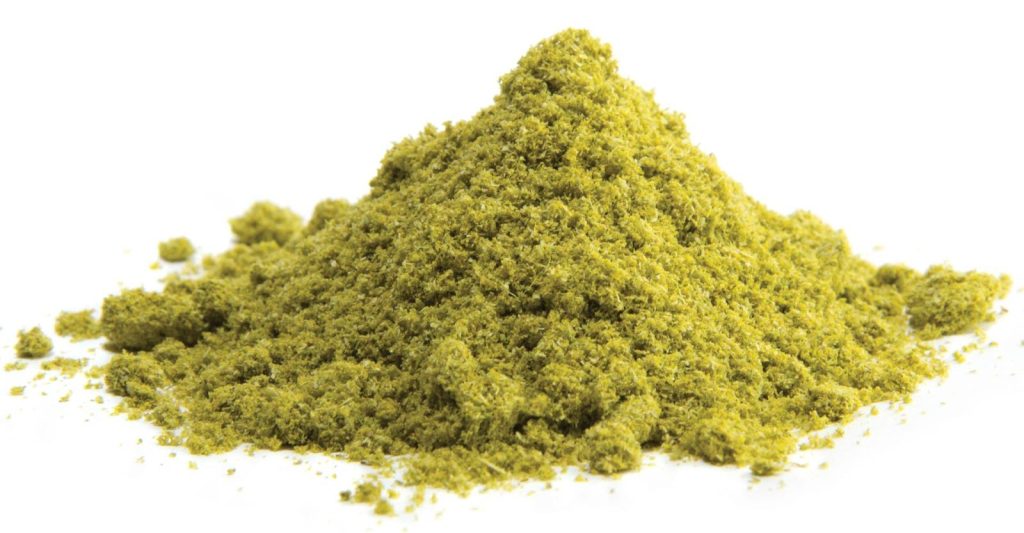
What is Lupulin Powder?
Lupulin pellets are concentrated pellets made by separating lupulin powder from the vegetal matter (bract) of the hop. The resulting product has intensified concentrations of alpha-acids and essential oils typically found in a T90 pellet of the same variety.
There are a few hop producers are creating lupulin pellets:
What are the features of Lupulin Powder?
All three of these products are very similar. The pellets simply have less vegetative material in them, which reduces wort loss and increases efficiency. Other features of using lupulin pellets include:
- Batch yields increased up to 20 percent after using lupulin powder.
- Lupulin powder has fewer bittering iso-alpha-acids that come from the vegetation, which will result in less bitterness.
- Less contact time is needed when dry hopping.
- Provides more intense hop flavor without undesirable grassy, astringent flavors.
Due to these features, lupulin pellets are now commonly used in the dry hop by the most sought-after breweries in the country like Other Half and The Alchemist.
How do you use Lupulin Powder Pellets?
The estimated dosing rate of lupulin hop pellets is 40-50% of the typical T90 hop pellets by weight. It is commonly used in the whirlpool and dry hop additions.
Hop Hash
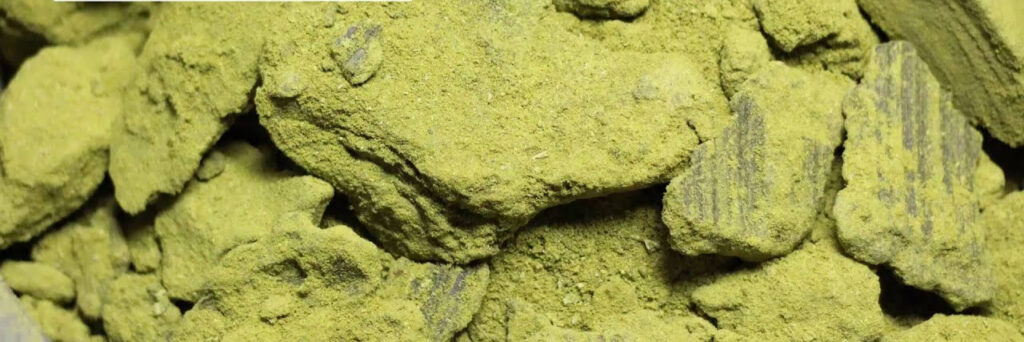
What is Hop Hash?
Hop Hash is an extremely potent form of hops that is the result of the pelletizing process. Hop Hash is a raw and unpolished product that is collected by hand from the pelletizer. Hop Hash is highly concentrated lupulin, but varies widely in consistency and form, ranging from a fine powder to sticky, oily clumps. Hop hash is perfect for dry-hopping and is great for adventurous brewers who want to kick their IPAs up a notch or two.
Hop hash is most similar to lupulin pellets. You can view it this way: Lupulin pellets are purposefully made to an exact specification, whereas the hop hash is the byproduct of manufacturers making T90 pellets.
Hop hash production is extremely limited, and only available during harvesting season (October in the US).
How do you use Hop Hash?
You should use Hop Hash in aroma additions due to its freshness. Anywhere you use Lupulin powder is where you can use Hop Hash. Dosage is hard to pin down because Hop Hash not made with exact science… it’s a byproduct.
WetHOP
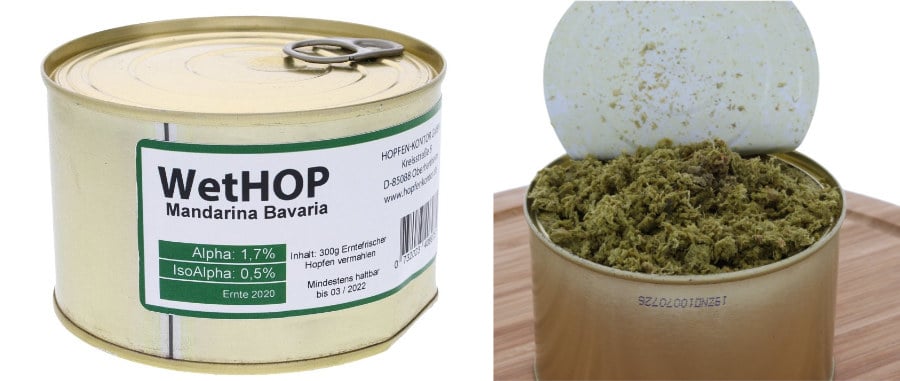
What is WetHOP?
WetHOP was developed and patented by Martin Schmailzl, Hopfen-Kontoras and is a method of preserving hops without drying them first. The process optimally retains the hop’s volatile aroma and flavor components during production. The process used involves shredding fresh hops under a blanket of CO2. The hops are also kept at exact temperatures to further protect the loss of aroma components.
Fresh hops are better than dried variations in many ways. Hops lose an average of 39% of their total oil content when dried directly after harvesting. They lose even more hop oils by grinding and evacuation during pellet production. Since WetHOP is not dried, their aromas rate higher and stronger than their dried counterparts.
What are the features of WetHOP?
- WetHOP has a 75-77% water content.
- WetHOP is non-perishable and is a stable product for 18 months.
- WetHOP contains all the ingredients of fresh, ripe hops.
- WetHOP introduces no oxidation during production.
- WetHOP provides a more rounded bitterness to your beer.
- WetHOP adds green hop aromas that cannot come from dried hops.
- All aromatic oils and Lupulin balls remain intact as there is no drying done.
- WetHOP contains a small amount of iso-alphas.
How do you use WetHOP?
You should use about 4 times as much WetHop to equal the usual dry pellets by weight. WetHOP can be used at any stage of the brewing process.
Featured image courtesy BaleBreaker.com

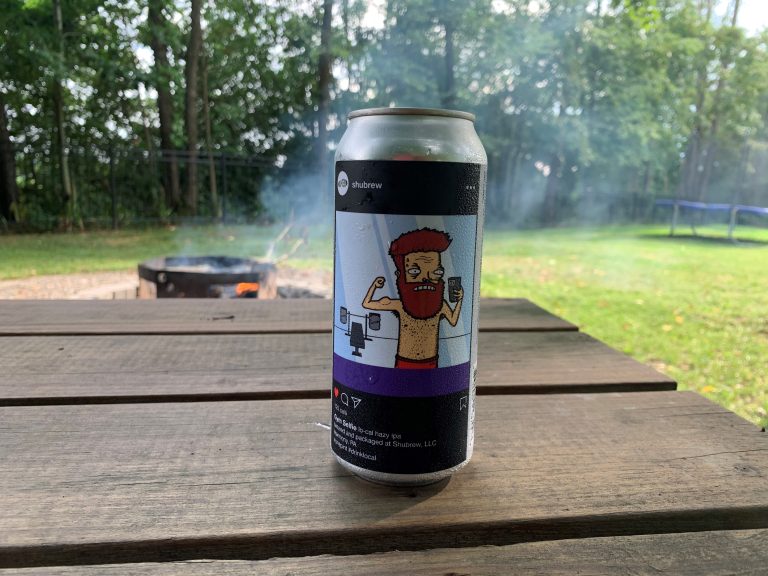

![32 North Brewing, Point Loma [CLOSED]](https://beermaverick.com/wp-content/uploads/2016/12/IMG_1036-768x768.jpg)
![The Bell Marker Brewery, Downtown [Re-branded as Owl Drug Co. house brand]](https://beermaverick.com/wp-content/uploads/2018/05/IMG_4302.jpg)
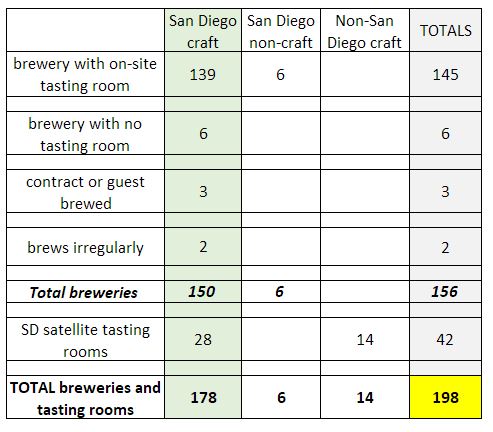
![Finest Made Ales, Santee [CLOSED]](https://beermaverick.com/wp-content/uploads/2017/08/IMG_2819-768x391.jpg)